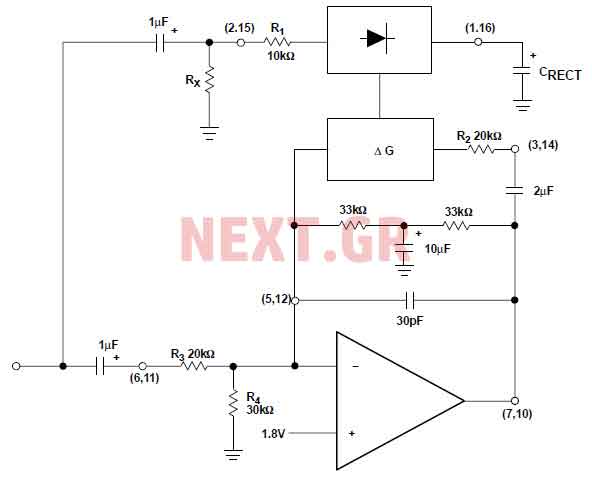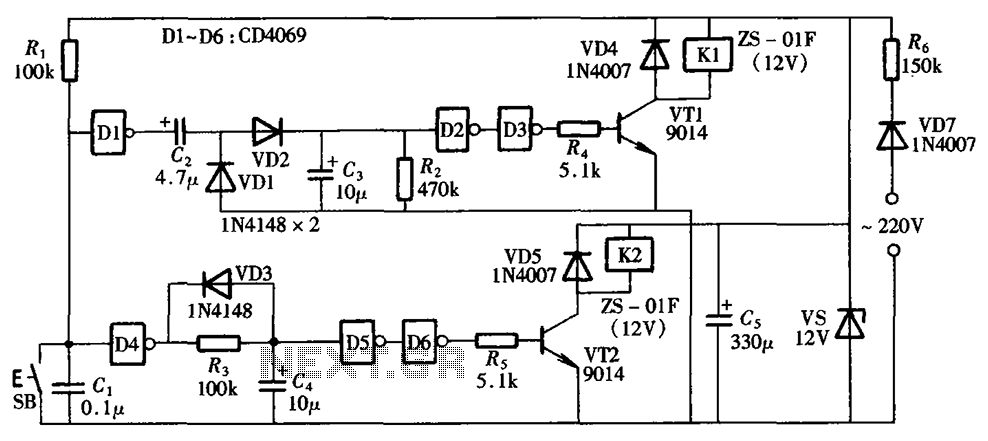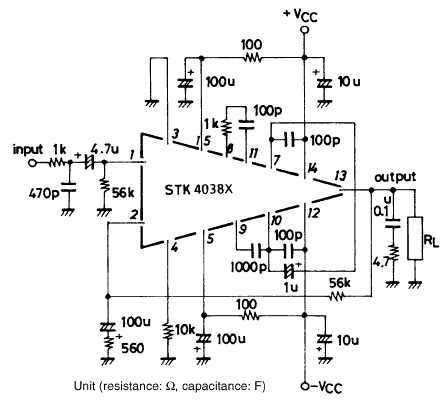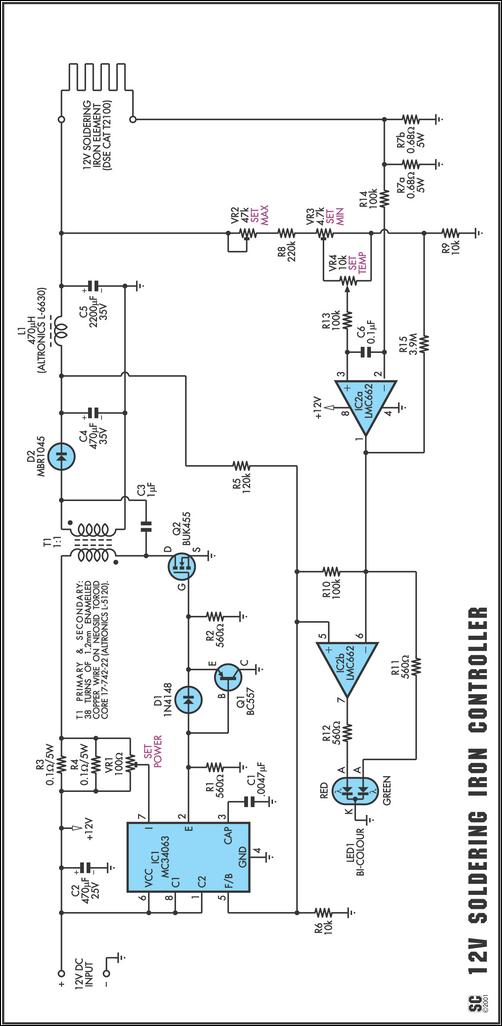
Automatic Audio level control with NE570

The NE570 can be used to make a high performance compressor FTA, except that the rectifier is connected to the input. This makes gain inversely proportional to the input level so that a drop of 20 dB input level will produce an increase of 20 dB gain. The output remains at a constant level. As shown, the circuit will maintain an output level of ± 1 dB for an input range of + 14 to -43 dB at 1 kHz.
More: Additional external components allow the output level to resolve.
The NE570 is a versatile integrated circuit designed for audio signal processing, specifically for applications requiring dynamic range compression. In this configuration, the NE570 operates as a compressor where the rectifier is strategically placed at the input stage. This design choice results in a unique gain characteristic where the gain is inversely proportional to the input level. Consequently, a decrease of 20 dB in the input signal level corresponds to an increase of 20 dB in gain. This behavior is particularly beneficial in audio applications where maintaining a consistent output level is crucial.
The circuit is designed to sustain an output level within ± 1 dB over a broad input range from +14 dB to -43 dB at a frequency of 1 kHz. This feature ensures that the audio signal remains stable and free from distortion, even when the input level varies significantly.
To enhance performance and allow for finer control of the output level, additional external components can be integrated into the circuit. These components may include resistors, capacitors, and potentiometers, which can be adjusted to tailor the compressor's response to specific requirements. For example, a variable resistor can be employed to set the threshold level at which compression begins, while capacitors can be used to shape the attack and release times of the compressor, further refining the audio output.
Overall, the NE570-based compressor circuit is a robust solution for audio processing, providing reliable gain control and maintaining output consistency across a wide range of input levels.The NE570 can be used to make a high performance compressor FTA, except that the rectifier is connected to the input. This makes gain inversely proportional to the input level so that a drop of 20 dB input level will produce an increase of 20 dB gain.
The output remains at a constant level. As shown, the circuit will maintain an output level of ± 1 dB for an input range of + 14 to -43 dB at 1 kHz.
More: Additional external components allow the output level to resolve.
The NE570 is a versatile integrated circuit designed for audio signal processing, specifically for applications requiring dynamic range compression. In this configuration, the NE570 operates as a compressor where the rectifier is strategically placed at the input stage. This design choice results in a unique gain characteristic where the gain is inversely proportional to the input level. Consequently, a decrease of 20 dB in the input signal level corresponds to an increase of 20 dB in gain. This behavior is particularly beneficial in audio applications where maintaining a consistent output level is crucial.
The circuit is designed to sustain an output level within ± 1 dB over a broad input range from +14 dB to -43 dB at a frequency of 1 kHz. This feature ensures that the audio signal remains stable and free from distortion, even when the input level varies significantly.
To enhance performance and allow for finer control of the output level, additional external components can be integrated into the circuit. These components may include resistors, capacitors, and potentiometers, which can be adjusted to tailor the compressor's response to specific requirements. For example, a variable resistor can be employed to set the threshold level at which compression begins, while capacitors can be used to shape the attack and release times of the compressor, further refining the audio output.
Overall, the NE570-based compressor circuit is a robust solution for audio processing, providing reliable gain control and maintaining output consistency across a wide range of input levels.The NE570 can be used to make a high performance compressor FTA, except that the rectifier is connected to the input. This makes gain inversely proportional to the input level so that a drop of 20 dB input level will produce an increase of 20 dB gain.
The output remains at a constant level. As shown, the circuit will maintain an output level of ± 1 dB for an input range of + 14 to -43 dB at 1 kHz.
Additional external components allow the output level to resolve.
🔗 External reference

.jpg)


